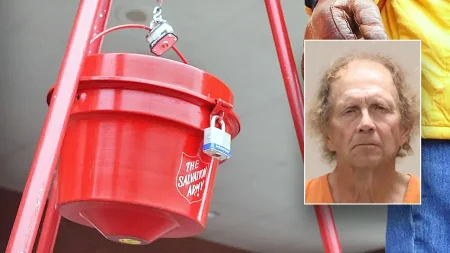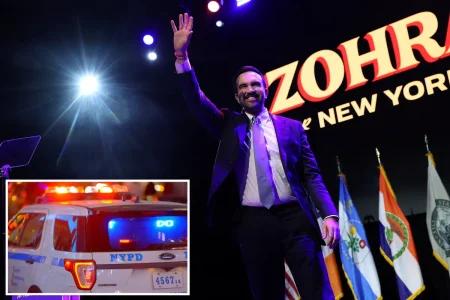Gatwick Airport Paralyzed: Drone Incursion Triggers Unprecedented Shutdown
Major UK Travel Hub Ground to Standstill as Unauthorized Drones Invade Airspace
In an unprecedented security incident that sent shockwaves through Britain’s air transport network, operations at one of the country’s busiest airports came to a complete halt yesterday after multiple unmanned aerial vehicles were detected flying illegally within the facility’s restricted airspace. The intrusion, involving what witnesses described as “two or three large drones,” forced authorities to implement emergency protocols, resulting in a complete cessation of all flights for several hours and causing travel chaos that rippled across Europe.
The incident began shortly after 9 PM when air traffic controllers first spotted suspicious objects hovering near critical flight paths. Security personnel quickly confirmed the presence of multiple sophisticated drones deliberately maneuvering in patterns that suggested coordinated control rather than accidental incursion. “These weren’t typical consumer drones,” explained Aviation Security Expert Philippa Cartwright, who was briefed on the situation. “From the descriptions provided by witnesses and security camera footage, we’re looking at professional-grade equipment with extended flight capabilities and potentially modified systems. The deliberate nature of their flight patterns near active runways left authorities with no choice but to suspend operations immediately.”
As the shutdown entered its second hour, the situation inside terminal buildings grew increasingly tense. Thousands of travelers found themselves stranded as departure boards displayed a sea of red “CANCELLED” notifications. Holiday travelers, business commuters, and families with young children crowded customer service desks seeking information that was in short supply. “We were about to board our flight to Barcelona when everything stopped,” said James Harrington, a management consultant who had been planning a pre-Christmas weekend break with his partner. “At first they said it would be a short delay, but as hours passed, it became clear nobody was going anywhere. The most frustrating part was not knowing when this would end or why someone would deliberately cause such disruption.”
Drone Incidents Rising Globally as Regulation Struggles to Keep Pace
The dramatic shutdown highlights a growing vulnerability in global aviation infrastructure as drone technology becomes increasingly accessible, sophisticated, and difficult to counter. Transportation security analysts have warned for years about potential scenarios exactly like this one, where relatively inexpensive consumer technology could be leveraged to disrupt critical transportation systems. According to the International Air Transport Association, reported near-misses between aircraft and drones increased by 194% between 2018 and 2022, with major airports around the world experiencing similar, though typically briefer, disruptions.
What makes this particular incident especially concerning for aviation authorities is both its duration and the apparent sophistication of the approach. “Most drone incursions are brief, often the result of amateur operators who are simply unaware of flight restrictions,” noted Dr. Eleanor Thornwick, director of the Center for Aviation Security Research. “What we’re seeing here demonstrates clear intent to disrupt operations, with multiple devices operating in a manner designed to evade immediate countermeasures. The perpetrators seemed to understand exactly which areas would trigger maximum operational impact while minimizing their risk of detection or interception.”
Law enforcement response included deployment of specialized counter-drone technology, including radio frequency jammers and acoustic detection systems, but the perpetrators appeared to have anticipated such measures. Police helicopters equipped with thermal imaging cameras were dispatched to locate the drone operators, who must legally remain within visual line of sight of their aircraft in the UK. “The challenge with drone incidents of this nature is that the operator could be controlling the devices from miles away,” explained Former Metropolitan Police Counter-Terrorism Officer Marcus Delaney. “With modern control systems, they don’t even need to maintain continuous control—programmed flight paths can be executed autonomously while the operator has already left the area.”
Economic Impact Extends Far Beyond Delayed Flights
The financial consequences of the shutdown extended far beyond the immediate disruption to passengers. Each hour of non-operation at a major international airport represents millions in lost revenue, with cascading effects throughout the aviation ecosystem. Airlines faced costs for diverted flights, crew overtime, passenger accommodation, and rebooking expenses. Airport retailers lost critical pre-holiday shopping hours, while ground transportation providers saw scheduled services thrown into disarray.
Preliminary estimates suggest the total economic impact could exceed £20 million when accounting for all direct and indirect costs. “Major disruptions like this one affect dozens of interconnected businesses and services,” explained Aviation Economist Catherine Walsh. “From the obvious costs to airlines and the airport itself to less visible impacts on supply chains, connecting flights at other airports, and even hotel occupancy rates in destination cities. The ripple effects can continue for days after service is restored.” The incident has also raised serious questions about insurance coverage for such events, as many policies contain exclusions or limitations for deliberate acts of disruption that fall short of terrorism classifications.
Beyond immediate costs, aviation industry leaders expressed concern about potential copycat incidents. “Whenever vulnerabilities in critical infrastructure are publicly exposed, there’s always risk of inspiration,” said International Aviation Security Association Director Thomas Reid. “That’s why the response to this incident—both in terms of the immediate security countermeasures and subsequent investigation and prosecution—will be closely watched by airports worldwide. Establishing meaningful deterrents is essential.”
Security Experts Call for Enhanced Counter-Drone Capabilities
In the aftermath of the disruption, aviation security specialists have renewed calls for airports to invest in more robust drone detection and mitigation technologies. Current countermeasures primarily focus on detection rather than neutralization, with limited options for safely disabling unauthorized aircraft in busy airspace. “The technology exists to create more comprehensive defensive systems,” explained Dr. Naomi Harrington from the Institute of Aerospace Security. “But implementation has been slowed by regulatory complexities, cost considerations, and concerns about potential interference with legitimate aviation communications systems.”
Several promising technologies are currently under evaluation, including directed energy systems that can disable drone electronics without creating hazardous debris, advanced radio frequency analysis tools that can track control signals to their source, and AI-powered detection systems capable of distinguishing drones from birds and other airborne objects at greater distances. “What we’re seeing is the beginning of an arms race between drone technology and counter-drone measures,” observed Aerospace Defense Consultant Michael Zhang. “The accessibility of increasingly sophisticated drone technology means airports need to accelerate adoption of next-generation protection systems.”
The incident has also prompted calls for stricter regulations on drone manufacturing and sales, including mandatory transponder systems that would broadcast identification information and respect geo-fenced no-fly zones. “The challenge is balancing legitimate uses of drone technology with security requirements,” said Civil Aviation Authority spokesperson Harriet Jenkins. “Drones provide valuable services across multiple industries, from infrastructure inspection to agriculture and emergency response. Creating reasonable safeguards without stifling innovation remains the goal.”
Investigation Continues as Normal Operations Resume
As the airport gradually restored normal operations early this morning, police and aviation authorities have launched a multi-agency investigation to identify and apprehend those responsible. The deliberate disruption of air traffic carries severe penalties under aviation security laws, with potential imprisonment of up to five years under current legislation. Investigators are analyzing recovered drone flight path data, reviewing security camera footage from surrounding areas, and examining radio frequency signatures captured during the incident.
“We’re treating this as a serious criminal investigation,” stated Chief Inspector Laura Bennington at a press briefing. “The deliberate endangerment of aircraft and disruption of critical national infrastructure is not a prank or protest—it’s a serious criminal offense with potentially life-threatening consequences. We’re utilizing all available resources to identify those responsible.” Authorities have requested that members of the public who may have observed suspicious activity near the airport perimeter during the timeframe in question contact the dedicated incident hotline.
As passengers whose travel plans were severely disrupted begin the process of rebooking flights and seeking compensation, the aviation industry faces difficult questions about its vulnerability to this emerging threat vector. “Yesterday’s incident demonstrates that even our most sophisticated transportation systems remain vulnerable to relatively simple disruption,” concluded Aviation Security Analyst Dominic Fraser. “The question isn’t whether this will happen again—it’s where, when, and whether we’ll be better prepared next time.”







